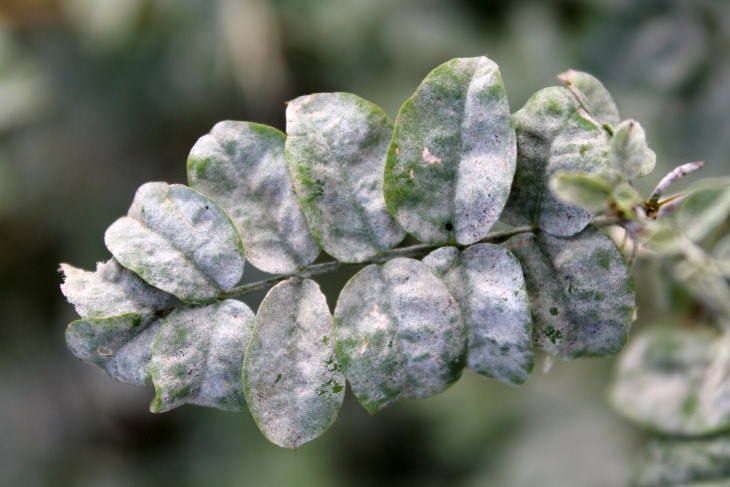
You’re tending to your plants at home or in the garden one day, and you suddenly notice white fuzzy stuff on some of the leaves. A few more days pass, and you see that it continues spreading. You realize that it won’t go away on its own. So what is that white stuff, and more importantly, how do you get rid of it?
First things first, you’re likely dealing with powdery mildew. This is a rather common plant disease and, unlike many other plant diseases, it can be effectively treated with home remedies, especially when caught early. Read on to know more about powdery mildew and learn how to eradicate this pesky plant disease.

Powdery mildew is one of the most widespread plant diseases. It is an umbrella term for a range of fungal infections that affect both outdoor and indoor plants, with the fungus called Podosphaera xanthii being the most widespread cause of powdery mildew.
This disease is easy to identify: it appears as white fuzz, spots, or dust on the leaves, flowers, fruit, and sometimes stems of the plant. The longer you wait before treating the plant, the higher the risk of the mildew spreading to the entire plant.
The disease is caused by microscopic spores that can be carried to the plant from other plants through watering, the wind, or insect pollinators. The fungal spores that cause powdery mildew can live on the plant or the soil for weeks or months before they start damaging the plant. In their dormant stage, these spores are harmless.
However, when the right conditions arise, the fungus starts spreading and multiplying. High humidity, excessive shade, cool weather, and poor air circulation all create favorable conditions for powdery mildew to thrive. For this reason, powdery mildew is more widespread in late spring to early summer.
Powdery mildew can appear on any plant, but some species are more susceptible to the fungal disease than others. Some of such more vulnerable plants include:

The earlier you catch this pesky fungus, the better. At these early stages, a quick weekly spray of a homemade antifungal solution for a few weeks in a row will be able to completely eradicate the powdery mildew. If your plant is more heavily affected by the fungus, you may need to prune some of the leaves or branches first, and only then proceed with the DIY antifungal treatment.
This antifungal treatment contains no harsh chemicals or pesticides, so you can easily use it on your indoor plants or edible plants like fruit trees, herbs, and vegetables.
Ingredients
1. Combine all the ingredients in a milk jug, shake well, and decant the antifungal solution into a clean spray bottle.
2. Apply the solution generously onto the affected plant. It’s best to do so early in the morning or in the evening, as indirect sunlight combined with this solution may cause the leaves to burn.
3. Repeat on a weekly basis as needed.
Since powdery mildew is very common, there is no 100%-effective way of preventing it. However, you can minimize the chance of getting it by:
We hope you found this article useful, happy planting!
Share these tips with fellow plant lovers